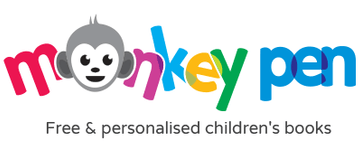"The Art of Praise": What to do To Encourage Your Child's Coloring
Nov 14, 2025
Children see the world in bright, vibrant colors and are full of imagination. When they're sitting with their crayons or paint, they're not just making designs but also expressing their thoughts and hopes. As teachers or parents, what we do with their art plays a significant role in the way they view themselves and their artistic talents. The art of praising helps inspire children's artwork and helps them develop confidence and imagination.
1. Why is encouragement more critical than Perfection
Children are often praised by adults merely because the picture looks "good" and "realistic." But for youngsters, painting isn't about perfectionism. It's all about exploration. If a parent says to children, "That's so neat!" only if the lines are clean and tidy, it may convey an image that cleanliness has more importance than creativity. Children see the world in vibrant colors and are brimming with imagination. When they're sitting with their crayons or paint, they're not only creating shapes, but also expressing their thoughts and their hopes.
Instead, shift the focus from what it looks like to how they felt while creating it. Ask,
"I am in love with the colors you chose! What inspired you to choose these colors?"
This way of working increases trust and lets your child feel appreciated for their work and imagination, not just for the outcome. The genuine praise of children's talents acknowledges rather than necessarily Perfection.
2. Be Specific: The Effects of Meaningful Praise
Common phrases like "Good work!" or "That's nice!" are kind but not memorable. Children gain more benefit from specific feedback that focuses on the areas they did well. For instance:
- "I am impressed with the way you colored your sky purple. This is an amusing idea!"
- "You employed so many shades of green. It creates a vibrant look."
- "I am glad you took the time to color the tree with care."
Specific praise helps children recognize what they're doing well and inspires them to try more. It demonstrates that you're paying attention to what they're doing and is among the best motivations for child artists.
3. Concentrate on the effort, not the Talent
The phrase "You're extremely talented!" sounds positive; however, it can also create anxiety. Children could begin to believe it's a fact that you tell, and quit striving when things get difficult.
Instead, applaud the effort:
"You have worked extremely hard on this image."
"I love how you persevered even when it was difficult to draw the flower."
If children realize that effort is the key to progress and improvement, they grow more resilient and confident. This attitude helps build confidence in the little artists- not just through inherent talent, but also through perseverance, training, and a desire to learn.
4. Encourage Self-Expression Rather than Comparison
You can easily say, "That is more appealing than the last drawing you did!" or "Yours is better than the other one." However, comparisons, even when well-meaning, can make children worry about "winning" recognition rather than having fun with the drawing process.
To truly encourage children's artistic talents and creativity, we must respect each child's individuality. Every child has a distinct style. Some love precise colouring, while others enjoy the wildest of strokes. Instead of making comparisons, make statements like:
"Your image is vivid!"
"You always have these innovative concepts."
This kind of acknowledgement increases their confidence in their individuality and lets them feel at ease being themselves and freely expressing their thoughts.
5. Create a conducive environment to encourage creativity
Encouragement goes beyond words. The environment is critical where creativity can flourish. It doesn't require expensive materials. A small container of crayons and paper can be a boon if your child feels secure.
Here are some easy methods to create a stimulating atmosphere at your home:
- Show their artwork on the refrigerator or noticeboard. It lets your child know that you appreciate their work.
- Please take part in their drawing or coloring. It shows genuine enthusiasm.
- Keep art time relaxed. Do not give instructions; let the children explore on their own.
- Provide variety. Provide a variety of materials, including crayons, chalks, colored pencils, and natural objects like leaves or flowers.
When you do these little actions, you're communicating that creativity is essential- not just as a pastime, but as a mode of thinking.
6. Change the way you use praise in conversation
If you aren't telling them, "That's lovely," and then leaving, you can engage your child in a brief chat about their art. This helps them develop their communication skills and consider their creative options. Ask them:
- "How did you come up with your idea?
- "What's happening in your picture? "
- "Which part did you find yourself coloring the most?"
These open-ended questions demonstrate that you are a fan of their thoughts and not just their art. If you foster children's imagination by nurturing curiosity, you help them become confident storytellers, not just colorers.
7. Celebration Small Progress
Children are growing at a tiny pace. Perhaps your child used to sketch out random notes, but now they stick to the guidelines. They may have begun mixing colors with care. Be proud of these little wins!
You could say:
"I noticed you've included more details this time- what a great advancement!"
When praise focuses on improvement, kids are encouraged to keep improving. As time passes, this consistent, encouraging behaviour transforms coloring into a fun learning experience that increases imagination and continuity.
8. Avoid Overpraising
Although it is a powerful thing to say, too much of it isn't always meaningful. If each scribble you write has the words "amazing" or "the greatest of all time," kids may cease being convinced by your words. The balance is crucial. Be careful not to give praise for lack of effort or for growth.
Sometimes, simply a smile or a nod, "I love this part," could be enough. This helps keep praise honest and genuine- two attributes that can be very helpful in building confidence in your child's art over time.
9. Utilize Praise to Improve Self-Esteem Beyond the realm of art
It's not just about coloring pages. The confidence that children gain through their art can help them in different realms of their lives- from problem-solving and social interactions to.
When a child is happy with the work they've made, they begin to trust their own ideas. This confidence helps them talk up in class, experiment with new techniques, and overcome errors.
If you praise their work, keep in mind that you're not just praising an artist; you're fostering an expressive, confident human being.
10. Keep Your Creativity as a Shared Joy
Last but not least, remember that art isn't an event; it's about connecting. Spend time with your child and color with them. Smudges and smudges are fun to laugh about, admire each other's work, and take in the moment.
If praise is shared with passion and love, it creates a long-lasting bond with your child. It helps them to understand that life and art are more meaningful if they're enjoyed with enthusiasm and love. Children can see the world through bright, vivid colors that are full of imagination. With crayons, markers, and colored pencils, children are not just shading pictures; they are shaping dreams, hopes, and a better future.
Creating better humans through recognizing the arts
It is vital to realize that praising isn't just about flattery; it also helps children discover their true potential and the world. By providing thoughtful, precise, and balanced praise, you can help your child see art as an exciting space for exploration rather than judgment.
When your next little artist presents you with an array of colors, pause before speaking. Take a close look. Have them discuss their choices. Recognize their efforts.
In that tiny moment, you're not only giving children a high-five, but you're helping them believe in themselves. At Monkey Pen, we have created a wonderful collection of printable coloring pages and free coloring book pages for your munchkins. Select from the wide variety and start recognizing the efforts of the little hands. The website also offers various educational resources, including posters, children's books, and dot-to-dot workbooks. All are available in PDF format at absolutely no cost.


